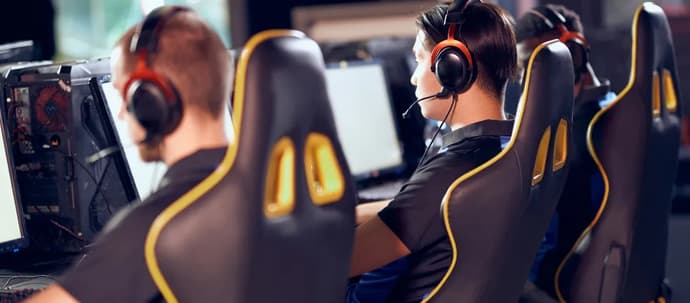
The impact of patches and updates on e-sports betting odds

Compared to traditional sports—where rules crawl forward and seasons settle into a rhythm—esports moves fast. Too fast, sometimes. Developers push patches that can reshape how teams play, which strategies still work, and who suddenly looks mortal. Those tweaks might open doors for bettors and, at the same time, trip up the books. It’s a landscape that doesn’t have a neat equivalent in older betting markets.
Take a typical week: Riot nudges a League of Legends champion down a peg, or Valve tinkers with weapon balance in Counter-Strike. Overnight, the ground shifts. Who looked safe on Monday may look suspect by Thursday. Odds try to catch up; they don’t always manage it right away.
The immediate chaos after major patches
The first 48–72 hours after a meaningful patch can be messy—fun, but messy. Pricing matches when underlying mechanics just changed means books are guessing more than they’d like to admit. I’ve watched favorites at -200 flip to +150 underdogs after a signature strategy got clipped. It feels dramatic because it is.
This isn’t just some theory. When Dota 2’s 7.33 patch reworked the map, several top teams stumbled while mid-tier rosters found odd little edges. Markets lagged. For weeks, in some cases—longer at slower books. Sharp bettors who read the notes and thought through the knock-on effects found opportunities. You see echoes of this elsewhere: Valorant agent tweaks, Overwatch hero reworks—similar story, different patch.
How smart money exploits patch windows
For the more serious crowd, patch notes can look almost like legal insider info. Not the same, of course, but close in spirit. Where football bettors track injuries or weather, esports analysts comb through balance changes like accountants reading footnotes. The logic isn’t new; it parallels what you find in other markets, including nfl predictions, where spotting meta shifts and tactical pivots may separate the quick from the late.
Teams that adapt fast often get mispriced for a stretch—their true chances improve before the lines reflect it. The reverse happens too: lineups built on now-nerfed plays can stay overvalued out of habit. The practical move is simple: read the notes, map them to team comps, and ask who has a coaching staff and player pool versatile enough to pivot. Squads like T1 in League or Astralis in Counter-Strike have reputations—earned, mostly—for riding meta changes without losing the plot. That history, whether perfectly predictive or not, tends to matter.
Bookmaker challenges and responses
Esports asks books to do something unusual: price a game whose rules may change monthly and whose meta shifts weekly. Even sophisticated operators—those with former pros or coaches on speed dial—can struggle when a big update lands. Smaller or generalist shops are often a step behind.
You’ll see a few reactions. Some books pause certain markets until they can think. Others widen margins to cushion uncertainty. The ones with deeper esports benches usually reprice faster and closer to “right,” though even they miss when the patch is wild. For bettors, this creates a very normal, very human edge: shop around. Price gaps between operators are often largest in the first day or two after a shake-up.
Defense allowed the fewest yards, and it provides a parallel in traditional sports where historical performance is easier to gauge.
Long-term market evolution
Give it a couple of weeks—two to four, give or take—and the dust tends to settle. Teams solve the puzzle, the new meta coalesces, and a fresh hierarchy takes shape. The board you see after that can look nothing like what came before. Former favorites may wobble for a while; overlooked rosters might stick as real contenders, not just a cute story.
The trick is telling what’s durable versus what’s noise. Some changes are structural—map layout overhauls, economy tweaks, champion pool shifts—and those can hold. Others fade once teams figure out counters. For anyone treating this seriously, understanding patch cadence and its competitive knock-on effects isn’t optional anymore; it’s the job. If you can translate patch notes into likely playstyle shifts quickly—and spot value before pricing corrects—you might carve out a steady edge in a market that, unlike traditional sports, keeps rewriting itself midseason. Actually, make that midweek.
Moreover, a quarterback completed over 70 percent of passes draws attention to how consistent performance metrics guide evaluations in both traditional sports and esports.

Kateryna Prykhodko er en kreativ forfatter og pålidelig bidragyder hos EGamersWorld, kendt for sit engagerende indhold og sin sans for detaljer. Hun kombinerer historiefortælling med klar og gennemtænkt kommunikation og spiller en stor rolle i både platformens redaktionelle arbejde og interaktioner bag kulisserne.
 StarLadder Budapest Major 2025 - 3. etape Pick'em: Forudsigelser og meningerDen sidste kvalifikationsfase af Budapest Major begynder: et dybt kig på udfordrere, mørke heste og den intense kamp om de sidste otte playoff-billetter.
StarLadder Budapest Major 2025 - 3. etape Pick'em: Forudsigelser og meningerDen sidste kvalifikationsfase af Budapest Major begynder: et dybt kig på udfordrere, mørke heste og den intense kamp om de sidste otte playoff-billetter. Oversigt over Dota 2 BLAST Slam V PlayoffsFind ud af alt om Dota 2 BLAST Slam V Playoffs - hold, format, tidsplan og præmiepulje.
Oversigt over Dota 2 BLAST Slam V PlayoffsFind ud af alt om Dota 2 BLAST Slam V Playoffs - hold, format, tidsplan og præmiepulje. LoL Dev-video: Hvad der kommer i den nye 2026-sæson - genstande, rolleopgaver, hurtigere gameplay og meget mereOplev alt, hvad Riot har annonceret for LoL sæson 2026, herunder rolleopgaver, opdateringer af genstande, hurtigere gameplay, opgraderinger af synet og store ændringer af mål og splitpush.
LoL Dev-video: Hvad der kommer i den nye 2026-sæson - genstande, rolleopgaver, hurtigere gameplay og meget mereOplev alt, hvad Riot har annonceret for LoL sæson 2026, herunder rolleopgaver, opdateringer af genstande, hurtigere gameplay, opgraderinger af synet og store ændringer af mål og splitpush. Call of Duty: Black Ops 7 Sæson 1 OversigtOpdag, hvad der er nyt i BO7 sæson 1: opdateret multiplayer, udvidede zombier, Warzone-synkronisering, nye våben, Battle Pass-belønninger og meget mere fra 4. december 2025.
Call of Duty: Black Ops 7 Sæson 1 OversigtOpdag, hvad der er nyt i BO7 sæson 1: opdateret multiplayer, udvidede zombier, Warzone-synkronisering, nye våben, Battle Pass-belønninger og meget mere fra 4. december 2025.


